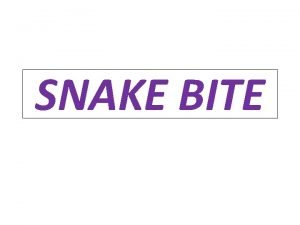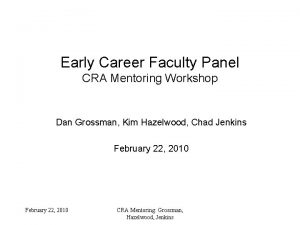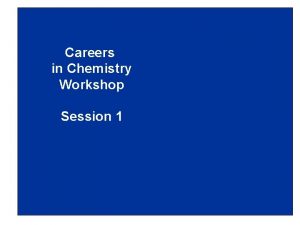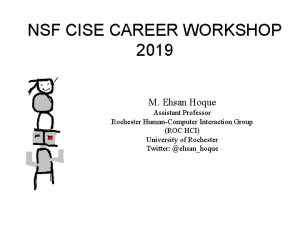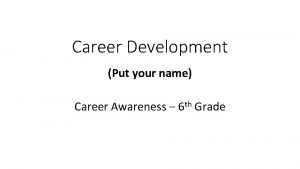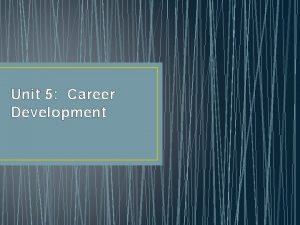ASV Education and Career Development Workshop Put down











- Slides: 11

ASV Education and Career Development Workshop Put down the pipette and pick up the pen: Getting your work published The third part of the story. . . The Publishing Process: From Submission to Medline Bert Semler University of California, Irvine

Most scientists regarded the new streamlined peer-review process as ‘quite an improvement. ’

Manuscript submission Electronic submission of papers for publication: the days of a complicated, hard-copy paper trail are gone. . . good riddance! After deciding on the appropriate journal for publication of your paper, carefully READ the “Instructions to Authors” for that particular journal. Pay attention to formatting requirements, manuscript structure, literature citation style, and allowable file types for figures, illustrations, and tables. Ignoring the specific requirements for manuscript formatting and organizational style can result in your paper being returned for correction or put reviewers and editors in a bad mood even before they judge the quality of the science – not a good move!

Important comment about preparation of data for use in figures for publication (from Journal of Virology): Computer-generated images may be processed only minimally. Processing (e. g. , changing contrast, brightness, or color balance) is acceptable only if applied to all parts of the image, as well as to the controls, equally, and descriptions of all such adjustments and the tools used (both hardware and software) must be provided in the manuscript. Unprocessed data and files must be retained by the authors and be provided to the editor on request. Now, back to the steps for submission, review, and publication of your manuscript. . .

Manuscript submission and review flow chart Electronic submission Assignment of manuscript to a specific Editor decides if ms is appropriate for journal No Return to author(s) un-reviewed Yes Editor sends manuscript to two or three reviewers (one or more of which may be a member of journal’s editorial board while one or more may not) Editor reads reviews and makes initial decision Reviewers read ms and generate criticisms and comments (aka, “The Waiting Game”)

. . . and after the reviews come back!! (well, maybe not quite that dramatic. . . )

Possible outcomes of the manuscript review process: Acceptance without revision (a rare event) Acceptance with minor revisions Revise (major changes – usually with additional experiments required; Editor usually sends the revised manuscript back to one or more of original reviewers) Reject (with encouragement to re-submit after extensive revisions and addition of new experimental data to address the flaws/issues in the original manuscript) Reject (submit to another journal)

Revising your manuscript in response to reviewers’ comments The goal is to improve the paper AND get it accepted for publication. If additional experiments are required, make sure they DIRECTLY address the reviewer’s specific criticism(s). For rebuttal arguments, use facts and literature citations to support your points, NOT emotion or umbrage. Remember that your revised manuscript and your responses to the reviewers’ comments will most likely be sent back to one or more of the original reviewers; so be prudent in your choice of words and in the tone of your rebuttal comments.

What happens after your manuscript is accepted for publication? First, the celebration. . . Then: Some journals publish the paper online as a PDF file of the final manuscript that was accepted for publication (days to weeks). Within a few weeks, journal sends page proofs of your article as it will appear in printed or electronic form. These proofs need to be read very carefully to check for printer’s errors or other items that need to be corrected. Journals usually want the corrected proofs back within a few days.

Online posting/publication of your manuscript and listing on Pub. Med Once the journal posts your manuscript on its website, it is usually listed on Pub. Med within a few days. Peer-reviewed journal manuscripts reporting research that is funded by NIH must be made freely available by submitting to Pub. Med Central. For more information on how this is done, refer to the following URL: http: //publicaccess. nih. gov/ Many journals routinely post their papers on Pub. Med Central and make all of their published papers freely available. For a listing of of these journals, please refer to the following URL: http: //www. pubmedcentral. nih. gov/fprender. fcgi

Take-home messages Pay attention to journal formatting, style, and figure/illustration requirements. The journal Editor is your conduit to the review and publication process. The reviewing process is intended to insure that only high quality papers populate the peer-reviewed literature. The pathway to publishing your paper is not always painful, and it can even be illuminating and rewarding! Questions or additional information needed? Please contact me at: blsemler@uci. edu


